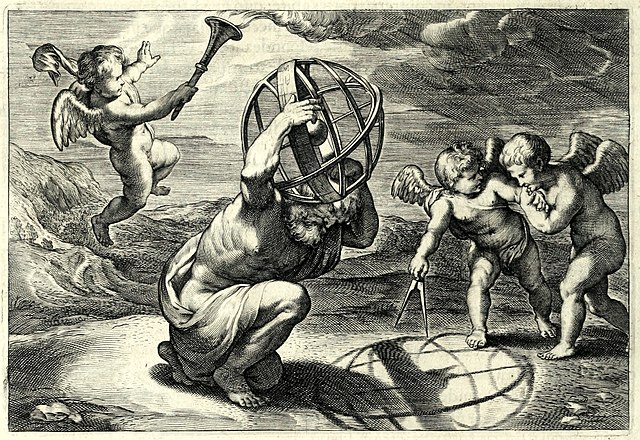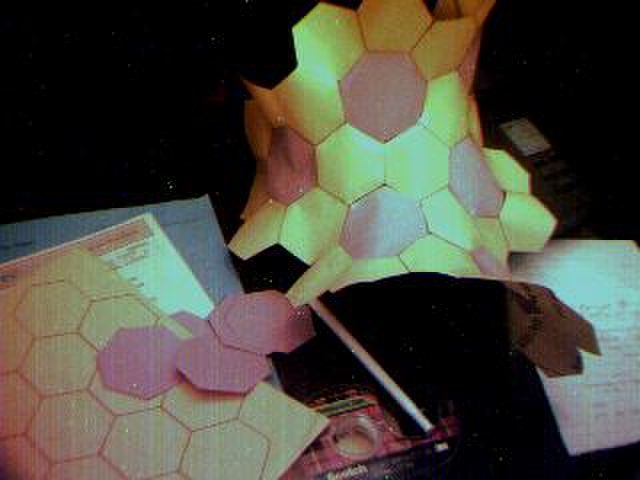In mathematics, a stereographic projection is a perspective projection of the sphere, through a specific point on the sphere, onto a plane perpendicular to the diameter through the point. It is a smooth, bijective function from the entire sphere except the center of projection to the entire plane. It maps circles on the sphere to circles or lines on the plane, and is conformal, meaning that it preserves angles at which curves meet and thus locally approximately preserves shapes. It is neither isometric nor equiareal.
Illustration by Rubens for "Opticorum libri sex philosophis juxta ac mathematicis utiles", by François d'Aguilon. It demonstrates the principle of a general perspective projection, of which the stereographic projection is a special case.
The sphere, with various loxodromes shown in distinct colors
Two points P1 and P2 are drawn on a transparent sheet tacked at the origin of a Wulff net.
The transparent sheet is rotated and the central angle is read along the common meridian to both points P1 and P2.
In mathematics, hyperbolic geometry is a non-Euclidean geometry. The parallel postulate of Euclidean geometry is replaced with:For any given line R and point P not on R, in the plane containing both line R and point P there are at least two distinct lines through P that do not intersect R.
A collection of crocheted hyperbolic planes, in imitation of a coral reef, by the Institute For Figuring
The "hyperbolic soccerball" is a paper model which approximates (part of) the hyperbolic plane as a truncated icosahedron approximates the sphere.






